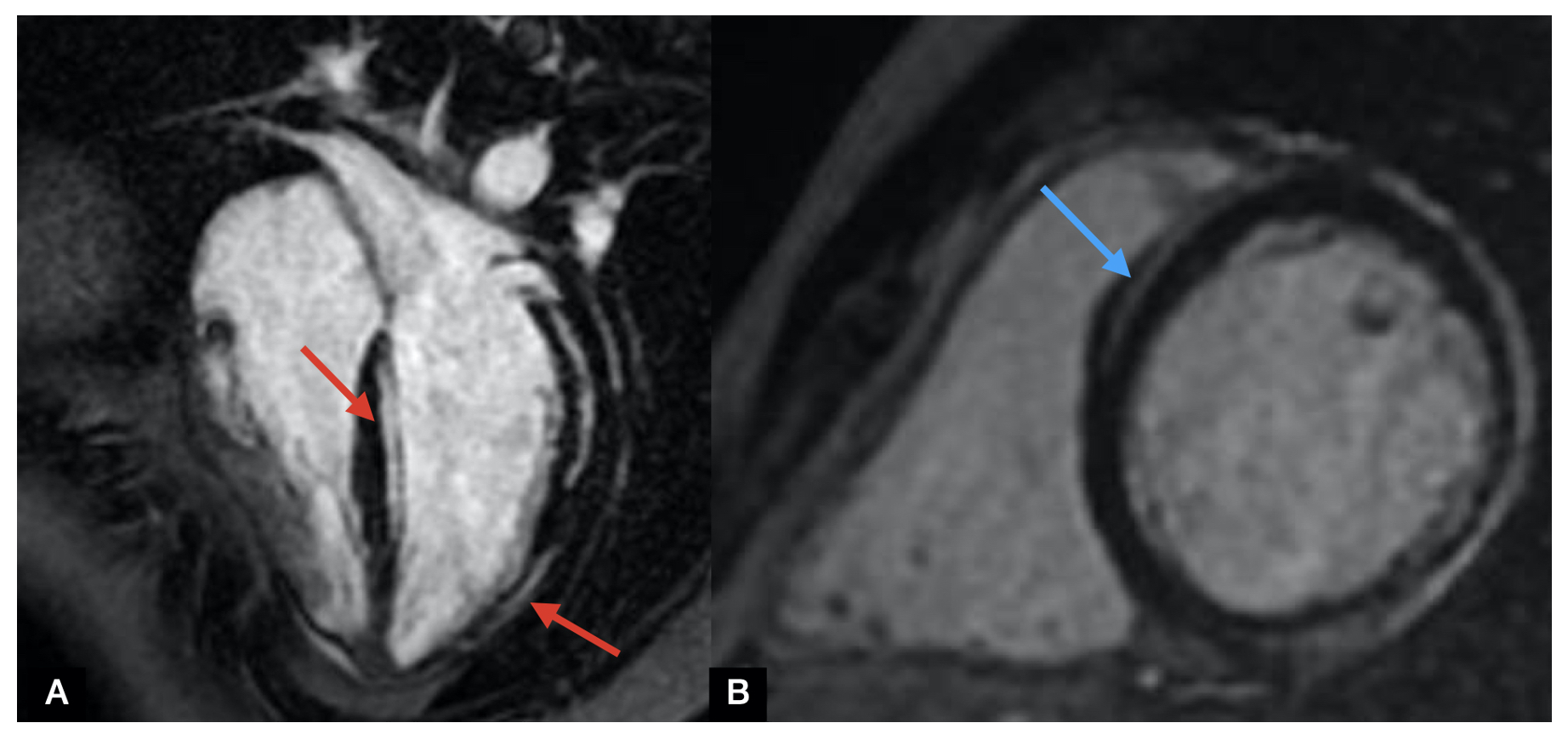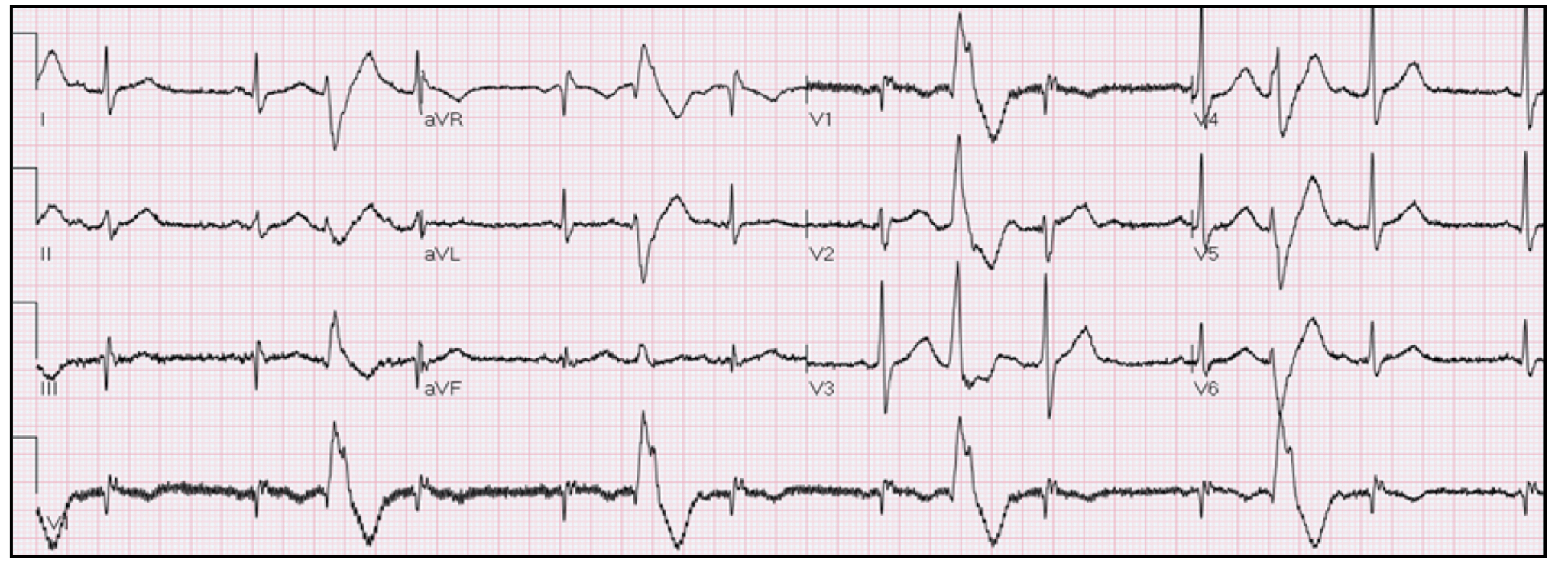Author: Isabelle Piazza, MD (@isabelle_isii, EM Resident Physician, Papa Giovanni XXIII Hospital/University of Milan – Italy) // Reviewed by: Lloyd Tannenbaum, MD (EM Attending Physician, San Antonio, TX); Jamie Santistevan, MD (@jamie_rae_EMdoc, EM Attending Physician, Presbyterian Hospital, Albuquerque, NM); Alex Koyfman, MD (@EMHighAK); Brit Long, MD (@long_brit)
The Case
A previously healthy 23 year-old male presents to your ED status post cardiac arrest. According to EMS, he had just returned from a holiday in the tropics and had been feeling unwell with a fever and sore throat. He was at work today complaining of a dull chest pain when he suddenly went unresponsive. His coworkers noted that he had no pulse and started immediate, high-quality CPR and called 9-1-1. The paramedics arrived quickly, took over the resuscitation and follow ACLS guidelines. They were able to achieve ROSC 5 minutes prior to arrival to the ED. The team works quickly to stabilize the patient and obtains the following ECG:

Figure 1: ECG shows normal sinus rhythm with RBBB. At the magnification of V1 and III leads there is a fragmentation of the QRS (red arrow)
Given the abnormal ECG and the recent cardiac arrest, a cardiology consultation is obtained in the ED. The cardiologist agrees with the need for a full cardiac work up and takes the patient for a cath and an echo. Coronary angiography showed normal anatomy without signs of coronary artery disease. Left ejection fraction on 2-D echo was decreased, at 20-25%, with mild ventricular dilatation. Troponin I and CRP were both elevated (223 ng/dl, nv <0.9 and 22 mg/dl nv <1).
Based on these findings and the patient’s presentation, the diagnostic hypothesis was acute myocarditis.
What is myocarditis?
Myocarditis is an inflammatory heart disease induced by both infectious (i.e. viral, bacterial, fungal) and non-infectious (i.e. immune-mediated organ-specific or systemic disease, drugs, toxins) causes. (1)
It mainly affects young adults and children, with non-negligible morbidity and mortality rate between 15-30%. (2)
The diagnosis of acute myocarditis can be challenging, as the clinical presentation and noninvasive assessment are usually nonspecific. ST-T elevation, T wave inversion and conduction defect are reported as most common electrocardiographic diagnostic features. (3)
The gold standard diagnostic criteria for myocarditis still relies on histopathological criteria, which requires a tissue sample. However, the recommendations to routinely perform the endomyocardial biopsy are still a matter of debate, as they can be quite challenging to obtain. (1, 4)
In the clinical practice, the diagnosis is most often supported by a non-invasive work-up, combining clinical, echocardiographic and cardiac magnetic resonance (CMR). CMR is diagnostic when shows an intramyocardial pattern of late gadolinium enhancement (LGE), expression of myocardial damage, in particular fibrosis. (5)

Figure 2. Patient’s CMR images. A: four chamber view, intramyocardial late gadolinium enhancement (LGE) in septal and lateral walls (red arrows). B: Short axis, anteroseptal LGE (blue arrow)
ECG Pearl: What does QRS fragmentation (fQRS) in the setting of myocarditis mean?
QRS fragmentation was defined as multiple high frequency peaks within the QRS complex. This electrocardiographic epiphenomenon is deemed to be the expression of a local slowing of electrical conduction across the myocardial muscle due to structural tissue changes. It has been described also in other different cardiac conditions such as ischemic, congenital and arrhythmogenic heart disease. (6)
Ferrero et al. described this sign for the first time in a patient with acute myocarditis, and it is now recognized as an additional useful diagnostic sign, mostly in the emergency environment. (7,8)
The ECG leads that show fQRS appeared to be correlated with LGE distribution on imaging. The presence of fQRS in one or more leads was consistently associated with persistence of LGE on the CMR. This finding seems to correlate with a less favorable evolution in term of mechanical function and might reflect myocardial inflammatory changes. (9)

Figure 3. Example of fQRS in inferior and lateral leads (III, aVL and aVF) in another patient with acute myocarditis. In this case there was also a concomitant ST elevation in the same leads. LGE at CMR revealed consistent myocardial fibrosis in inferior and lateral walls.
Case conclusion:
The patient was treated with conventional heart failure therapy (beta-blockers, ACE-inhibitors, potassium-sparing diuretic). No immunosuppressive therapy was started. The endomyocardial biopsy confirmed the diagnosis of acute myocarditis. An implantable cardioverter defibrillator (ICD) was implanted during the hospitalization due to the recurrence of ventricular arrhythmia.
The young patient is under strict instructions to continue to follow-up with his cardiologist. The left ventricle function has not completely recovered and he continues to have persistence of LGE at the CMR. His ECG is still abnormal.

Figure 4. Patient ECG at discharge. Sinus rhythm with RBBB and various premature ventricular contractions.
What are the main ECG pointers?
- ECG is strongly recommended in patients with suspected acute myocarditis presenting with typical or atypical chest pain or rhythm disturbances.
- Ferrero’s sign (fQRS) in the setting of myocarditis could be an important diagnostic finding, mostly in the acute setting.
- fQRS is a signal of myocardial fibrosis, so be aware of arrhythmias!
- Persistence of this sign could be associated with a less favorable evolution.
References
- Caforio AL, Pankuweit S, Arbustini E, Basso C, Gimeno-Blanes J, Felix SB, Fu M, Heliö T, Heymans S, Jahns R, Klingel K, Linhart A, Maisch B, McKenna W, Mogensen J, Pinto YM, Ristic A, Schultheiss HP, Seggewiss H, Tavazzi L, Thiene G, Yilmaz A, Charron P, Elliott PM; European Society of Cardiology Working Group on Myocardial and Pericardial Diseases. Current state of knowledge on aetiology, diagnosis, management, and therapy of myocarditis: a position statement of the European Society of Cardiology Working Group on Myocardial and Pericardial Diseases. Eur Heart J. 2013; 34:2636-48.
- Ghanizada M, Kristensen SL, Bundgaard H, Rossing K, Sigvardt F, Madelaire C, Gislason GH, Schou M, Hansen ML, Gustafsson F. Long-term prognosis following hospitalization for acute myocarditis – a matched nationwide cohort study. Scand Cardiovasc J2021 Mar 23;1-6. doi: 10.1080/14017431.2021.1900596. Online ahead of print.
- Ukena C, Mahfoud F, Kindermann I, Kandolf R, Kindermann M, and Bo ̈hm M. Prognostic electrocardiographic parameters in patients with suspected myocarditis. European Journal of Heart Failure 2011 13, 398–405ù
- Merlo M, Masè M, Cannatà A, Zaffalon D, Lardieri G, Limongelli G, Imazio M, Canepa M, Castelletti S, Bauce B, Biagini E, Livi U, Severini GM, Dal Ferro M, Marra MP, Basso C, Autore C, Sinagra G. Management of nonischemic-dilated cardiomyopathies in clinical practice: a position paper of the working group on myocardial and pericardial diseases of Italian Society of Cardiology. J Cardiovasc Med (Hagerstown). 2020;21:927-943.
- Aquaro GD, Perfetti M, Camastra G, Monti L, Dellegrottaglie S, Moro C, Pepe A, Todiere G, Lanzillo C, Scatteia A, Di Roma M, Pontone G, Perazzolo Marra M, Barison A, Di Bella G; Cardiac Magnetic Resonance Working Group of the Italian Society of Cardiology. Cardiac MR With Late Gadolinium Enhancement in Acute Myocarditis With Preserved Systolic Function: ITAMY Study. J Am Coll Cardiol. 2017; 70 :1977-1987
- Haukilahti MA, Eranti A, Kentt T, Huikuri HV. QRSfragmentation patterns representing myocardial scarneed to be separated from benign normal variants:hypotheses and proposal for morphology based classification.Front Physiol 2016;7:653.
- Ferrero P, Piazza I, Grosu A, Brambilla P, Sironi S, Senni M. QRS fragmentation as possible new marker of fibrosis in patients with myocarditis. Preliminary validation with cardiac magnetic resonance. Eur J Heart Fail. 2019;21:1160-1161
- Buttà C, Zappia L, Laterra G, Roberto M. Diagnostic and prognostic role of electrocardiogram in acute myocarditis: A comprehensive review.Ann Noninvasive Electrocardiol 2020;25:e12726
- Ferrero P, Piazza I, Kühl U, Grosu A, Tschöpe C, Senni M. QRS fragmentation as a possible electrocardiographic diagnostic marker in patients with acute myocarditis: preliminary histopathological validation. ESC Heart Fail. 2020;7:2527-2533.








1 thought on “ECG Pointers: Myocarditis and QRS fragmentation”
Pingback: Quiz 122, July 23th, 2021 – The FOAMed Quiz